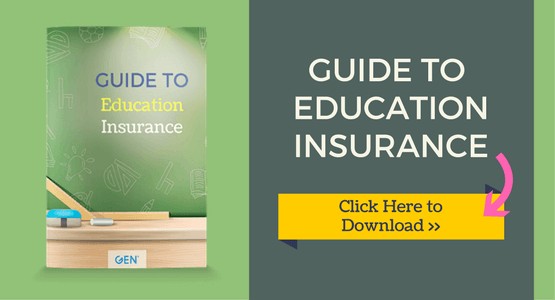Education is one of the most valuable investments a family can make, but it’s also one of the most expensive. As tuition costs continue to rise and the financial burden of higher education grows, families are looking for creative and reliable ways to fund academic pursuits. While savings accounts and scholarships often take center stage in these conversations, insurance is an often-overlooked tool that can play a significant role in education funding. When used strategically, insurance can provide both protection and financial support, helping families plan for the future with confidence and flexibility.
Life insurance is one of the most straightforward ways to ensure that education funding remains intact, even in the face of unexpected loss. For parents, purchasing a life insurance policy with a sufficient death benefit can guarantee that children will have the financial resources to pursue their education, regardless of what happens. This is especially important for families where one or both parents are primary income earners. If a parent passes away prematurely, the life insurance payout can be used to cover tuition, living expenses, and other educational costs, ensuring that the child’s academic journey continues uninterrupted. It’s a way to safeguard dreams and provide stability during a time of emotional and financial upheaval.
Permanent life insurance policies, such as whole life or universal life, offer additional advantages through their cash value component. These policies accumulate value over time, which can be accessed through loans or withdrawals to help pay for education. Unlike traditional savings accounts, the growth within a permanent life insurance policy is typically tax-deferred, allowing funds to build up more efficiently. When it comes time to pay for college or other educational expenses, policyholders can tap into this cash value without triggering immediate tax consequences. This flexibility makes permanent life insurance a versatile financial tool, especially for families looking to diversify their education funding strategy.
Another benefit of using life insurance to fund education is that it doesn’t count against financial aid calculations in the same way that traditional savings might. Assets held in a 529 plan or custodial account are often considered when determining eligibility for need-based aid, potentially reducing the amount of assistance a student can receive. In contrast, the cash value of a life insurance policy is generally not included in these assessments, which can help preserve financial aid opportunities. This subtle distinction can make a meaningful difference in the overall affordability of education, especially for families navigating complex financial aid systems.
Insurance can also play a role in funding education through specialized products designed for this purpose. Some insurers offer education-specific policies that combine life coverage with savings features tailored to academic milestones. These policies may include structured payouts timed to coincide with tuition payments or other school-related expenses. While not as common as traditional life insurance, these products reflect a growing recognition of education as a financial priority and offer families a way to plan with precision and purpose. They provide a disciplined approach to saving, backed by the protective benefits of insurance.
For grandparents and extended family members, insurance offers a meaningful way to contribute to a child’s education while also engaging in legacy planning. By purchasing a life insurance policy with a grandchild as the beneficiary, older family members can ensure that funds will be available for future educational needs. This approach not only supports the child’s academic goals but also reinforces family values around learning and opportunity. It’s a gesture that combines financial foresight with emotional significance, creating a lasting impact that extends beyond the classroom.
Business owners and high-net-worth individuals may also use insurance as part of a broader estate planning strategy to fund education. By leveraging life insurance within trusts or other financial structures, they can earmark funds for educational purposes while managing tax liabilities and preserving wealth. This is particularly useful in complex family situations or when planning for multiple generations. Insurance provides a level of control and predictability that can be difficult to achieve through other means, making it a valuable component of long-term financial planning.
Of course, using insurance to fund education requires careful consideration and expert guidance. Policies must be selected and structured to align with specific goals, timelines, and financial circumstances. It’s important to understand the terms, costs, and implications of accessing cash value or relying on death benefits. Working with a financial advisor or insurance professional can help families navigate these choices and integrate insurance into a comprehensive education funding plan. The goal is not just to buy coverage, but to use it strategically in support of a child’s future.
In a world where education is both a necessity and a challenge, insurance offers a unique blend of protection and possibility. It ensures that academic goals are not derailed by life’s uncertainties and provides a flexible, tax-efficient way to save for the future. Whether through life insurance, specialized products, or estate planning strategies, families can use insurance to invest in learning, support achievement, and build a legacy of opportunity. It’s a quiet but powerful way to turn financial planning into a foundation for growth, helping the next generation reach their potential with confidence and security.



